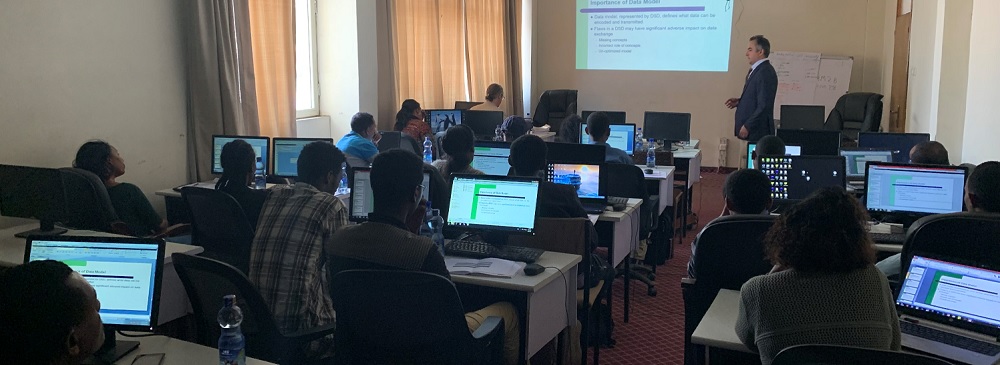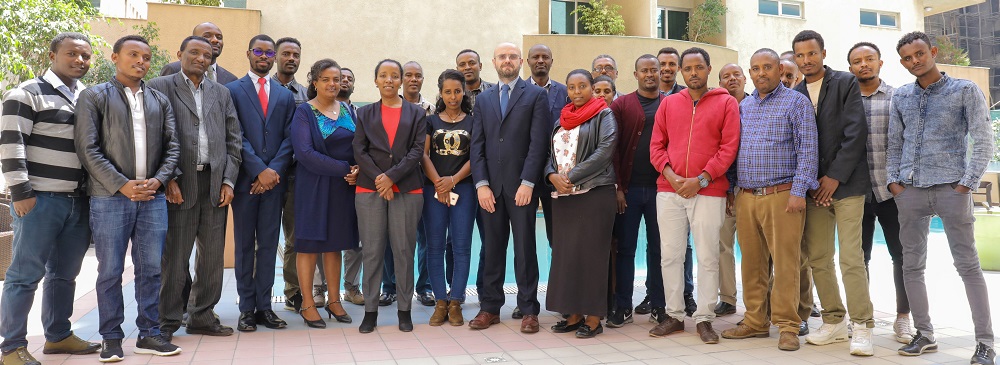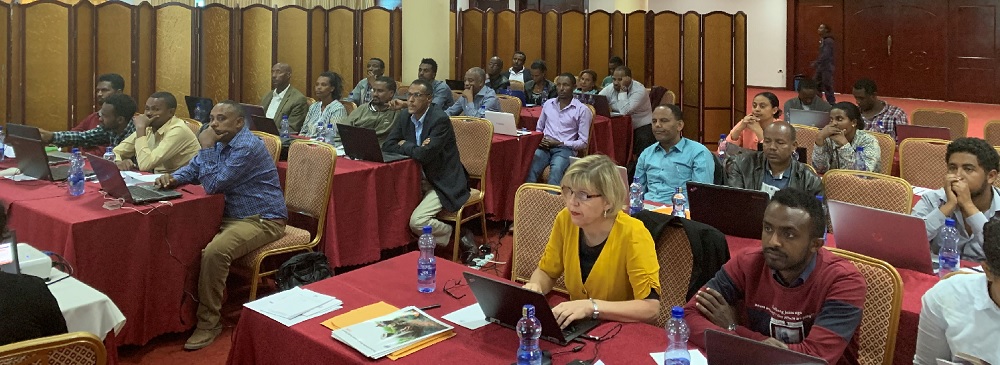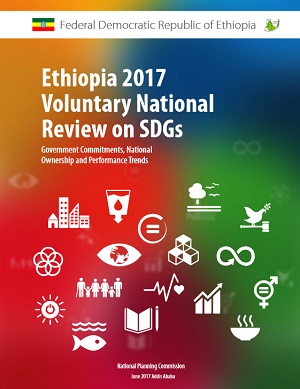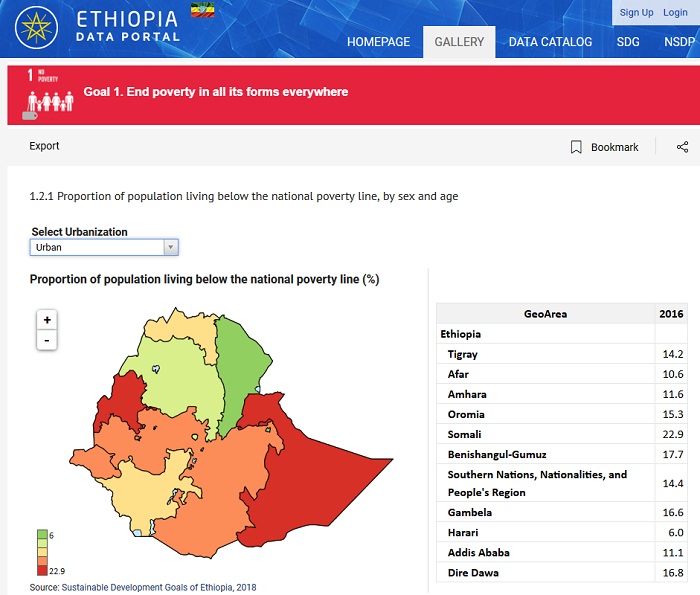Ethiopia
I. General on SDG monitoring set up
National SDG organizational set up
In Ethiopia, the overall SDG process is overseen by the National Planning Commission (NPC). The Central Statistics Agency (CSA) is the national statistical office which is legally accountable to the National Planning Commission (NPC). CSA has been generating and disseminating to user's socio-economic data pertaining to national development needs through sample surveys, studies and censuses. Close to 40% of the available data for monitoring the SDGs is produced by CSA. The remaining data for SDGs monitoring is collected from administrative data and information from other government executive organs. The NPC has a established mandate to coordinate and collect available indicator datasets related to SDGs that has been mainstreamed in the National Development Agenda where CSA is also providing methodological and technical support in validating the use of the data for official use in policy making.
National set of SDG indicators
In 2018, UNSD worked with CSA on assessing the capacity of the Ethiopian statistical system of reporting on the globally agreed indicators. The assessment identified 40 indicators to be currently available and additional 39 indicators to be easily feasible to obtain. More details of this assessment can be found here. The report indicates that the current statistical capacity of Ethiopia in terms of generating SDG indicators dataset for monitoring progress is at Medium Level and is still contingent on the continuation of external resource allocation at the same level.
SDGs, National strategies and Implementation plans.
The Ethiopian government has aligned their latest development strategy, their second Growth and Transformation Plan 2015-2020 (GTP II) to the SDGs. The SDGs have been integrated with the ten priority areas identified in GTP II. Mapping has been done between the relevant SDG goals and the 10 priority areas as presented in the Ethiopia’s 2017 VNR . Ethiopia has deployed existing institutional and organizational arrangements as well as human resources so that no new or parallel effort have been made to implement SDGs. It was also noted that the national reviews have confirmed the existing enabling policies and environments to effectively implement the SDGs in Ethiopia. The SDGs having been integrated with the GTP II which is approved by the council of ministers and ratified by the House of Peoples Representatives of the Federal Democratic Republic of Ethiopia. More details at can be found here
Ethiopia has launched a new ten-year national development plan to be implemented from 2020 - 2030 with the National Vision of becoming an African Beacon of Prosperity by 2030. As integral part of statistical modernization reform currently initiated by the agency as well as requirements to align statistical activities of the country with national development agenda of 2030, CSA has planned to develop a 10-year national statistics roadmap and next series of NSDSs (NSDS-III).
SDG report and Voluntary National Review
Ethiopia has collaborated with UNSD in both the UNSD-DFID SDG project and the Development Account-9th Tranche project on strengthening national capacities for sustainable development of statistics. More details of the DA9 project can be found here. In 2017, Ethiopia presented its first Voluntary National Report (VNR) on the progress it has made in achieving the SDGs to the High Level Political Forum.
https://ethiopia.opendataforafrica.org/SDG/
As part of the UNSD-DFID project UNSD organized a national data modelling and SDMX workshop for the staff at CSA who are working on the collection and dissemination of the SDG indicators. Participants were able to work on customizing the Global SDGs DSD to fit to their national need in order to disseminate indicator data at subnational level.
The Central Statistical Agency of Ethiopia (CSA) adopted AfDB’s Open Data Platform as their SDG dissemination platform, the project, in collaboration with AfDB organized a series of webinars for CSA staff. The initial webinars focused on building on the experience from the physical data modelling and SDMX workshop organized in June 2019 to get the available SDG indicators ready in the SDMX format based on a nationally customized DSD for the SDG dataset.
The country has also designed Growth and Transformation Plan II, 2015/16-2019/20, (GTP II) which involved broader public participation both at the federal and regional levels. The government of Ethiopia clearly recognizes and emphasizes the importance of statistical data, and hence the NSDS II has been designed as part of GTP II. Ethiopia is also committed to the implementation of continental and international initiatives aimed at achieving Sustainable Development Goals (SDG) and Agenda 2063. The Central Statistical Agency is mandated to collect socio-economic data as well as support and effectively coordinate the work of other NSS members to produce good quality data. Thus, the development of a five-year statistical plan is a key issue for the CSA and the country to ensure effective planning, monitoring and evaluation. Accordingly, the Central Statistics Agency has designed the Second National Strategy for the Development of Statistics (NSDS), and this has been adopted by the Statistics Council. The statistical plan, which is aligned with GTP II, is expected to generate the necessary data for monitoring and evaluation of GTP II and other continental and international initiatives like the SDG and Agenda 2063 by providing the necessary capacity building and effective coordination of the NSS.
Currently CSA is conducting the evaluation of NSDS II, which concluded at the end of 2020 and developing NSDS III that will be used to guide the work of the agency to further strengthen the existing statistical capacity and enhance use of management information available in line ministries , departments and agencies for statistical purposes till 2025.
Actual data sharing mechanisms
CSA disseminates data online through the CSA’s website. The website provides several statistical data tables, reports and dashboards. Additionally, data is shared by email and in some cases through official request with certain agencies.
CSA’s role in promoting quality and coordinating the NSS is made clear in Proclamation No 442/2005 that establishes the Central Statistics Agency.
The Proclamation states:
The objectives of the Agency are...to provide technical guidance to government agencies and institutions in their endeavour to establish administrative recording, registration and reporting systems; and build the capacity required for providing directives and consultations in database creation and development of administrative records and registration systems
Its further reinforced in the Ethiopian Data Quality Assessement Framework Theme 1 - that focusses on the implementation of the Statistics Law through two specific activities by providing methodological support to the NSS and introducing the memoranda of understanding (MoU) between the CSA and its NSS partners.
CSA in general have been able to coordinate the NSS in terms of getting indicator data from prominent partners in the NSS through letters of exchange and in some cases through a stablished MoU that was put in place between CSA and some sector Ministry, Agency or Department. However, an evaluation of the NSDS conducted jointly by PARIS21, AfDB and UNECA recommends the need to improve on the coordination through establishment of more MoU with the remaining key NSS partners. The NSDS evaluation report is available here.
IV. Data availability and disaggregation
CSA mainly provides data for indicators through census and surveys. Many of these are disaggregated at least by two or more dimensions. CSA also gathers some additional indicators through its existing coordinating role from the NSS for some selected indicators coming from administrative data sources.
According to the statistical gap assessment conducted jointly with UNSD and CSA a total of 79 SDG indicator dataset could be available through a minimum effort but out of these 40 of them are currently available.
In January 2019, as part of the UNSD-DFID project UNSD and CSA co-organized a national metadata workshop that was attended by seventeen government agencies from NSS. The workshop covered the nature and purpose of metadata and the importance of using metadata standards to describe SDG indicators and their data sources. It also introduced a SDG indicator metadata template as part of the exercise to get NSS participant familiarize with the creation of metadata for the SDGs. The UNSD SDG indicator metadata records and SDGs eHandbook were also showcased to assist participants understand the indicators and create useful metadata for localised indicators and indicator data sources.
CSA is currently working in establishing a follow up consultation with core constituencies of the NSS engaged in the production of SDG indicator datasets to produce a national metadata handbook for the SDGs and selected national priority indicators for the National Development Agenda with the support of UNSD-DFID project
Ethiopia has already put together a five year User Engagement Strategy in January 2020 in collaboration with UNSD as part of the UNSD-DFID project.
CSA is worked on the finalization of the User Engagement Strategy by undertaking national stakeholders' consultative meetings. It has already held two of such meetings at the national level in finalizing the process with the support from UNSD-DFID project.
The user engagement strategy will be advocating different modes of engagement that includes formal and informal consultations, use of different modes of interaction ranging from the traditional to social media, provision of statistical literacy and formalized relationship with key NSS partners among other things with various types of users.
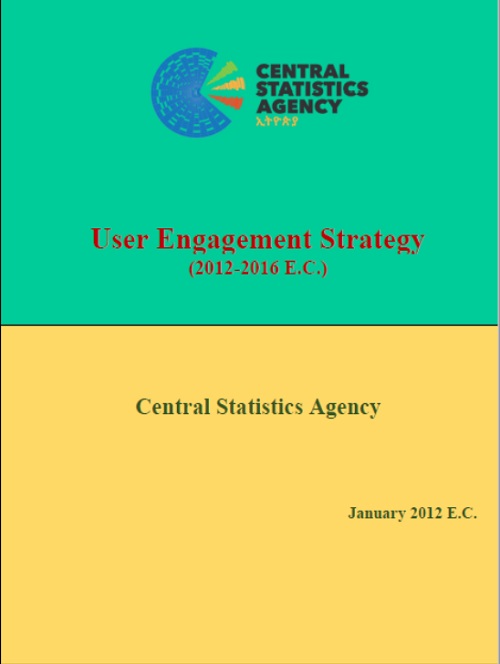
CSA is currently participating in the national council to see the possibilities of providing support in the national response strategy to COVID-19
